- Funky styling inside and out
- Spacious interior for petite dimensions
- Good ride and handling
- Needs more engine at this price
- Interior finish is basic
- Lacks some technology
We’re quite fond of the 2021 Hyundai Venue here at DiscoverAuto. It might not be as budget friendly as Hyundai’s former range starter, the Hyundai Accent, but it’s more well rounded and packs a lot more safety kit than its predecessor. Our only major gripes are that the value equation could be improved, whether by offering more kit and a better engine, or just bringing the price down to better suit what the Venue offers.
After spending some time in the updated-for-2021 Venue Active, we decided to see if throwing a little extra cash at the Venue makes it a more compelling light SUV. Let’s jump into the 2021 Hyundai Venue Elite and find out.
Price and Specs: 6.5/10
In 2021, the Hyundai Venue saw a few minor updates to its range including a model name change. Gone is the Go, with the ‘Hyundai Venue’ being the new base model. The Active and Elite models retain their pre-2021 names, but see additional equipment as well as a slight price rise. You can see the updated range in greater depth here.
So, what do you get in you top-of-the-range Venue Elite for $26,490 before on roads?
Carryover equipment from the Active includes the same 1.6-litre four-cylinder petrol engine from the rest of the Venue range, 17-inch alloy wheels, an 8.0-inch colour touchscreen, Apple CarPlay and Android Auto (wireless in the Venue and Active, wired in the Elite), a six-speaker audio system, electric windows, heated and electric folding mirrors, a leather steering wheel and gear knob, half leather/cloth upholstery, automatic halogen headlights with cornering function, a sliding front centre armrest, cruise control, drive mode selection with terrain control and roof rails.
Kit exclusive to the Elite includes a chrome grille, LED brake lights, a proximity key with push-button start, an auto up/down driver’s window, rear privacy glass, a sunroof (unless you opt for two-tone paint), single-zone automatic climate control, satellite navigation with live traffic updates, digital radio, and an additional USB port up front.
Safety is covered with an alarm, automatic high beam, rear parking sensors with a reversing camera, tyre pressure monitoring, driver fatigue monitoring, lane departure warning, lane keep assist, low- and high-speed autonomous emergency braking (AEB) with pedestrian detection, a hill holder, forward collision alert and six airbags. Exclusive to the Elite is blind-spot monitoring and rear cross-traffic alert. It’s worth keeping in mind that the Venue has a four-star ANCAP safety rating date stamped at 2019.
Our Venue Elite automatic (the six-speed manual unfortunately isn’t available in the Elite) is finished in ‘Typhoon Silver’ metallic paint (a $510 option) with a black roof, bringing the total drive away price to $31,028. We’re curious as to why Hyundai and Kia persist on deleting the sunroof for any of their cars equipped with a black roof. Personally, we’d choose the sunroof and wrap the roof black later if you really want it. Opting for the ‘Typhoon Silver’ or ‘The Denim’ (dark blue) exterior colours also swap out the black cloth trim for the lovely blue denim cloth upholstery paired with blue and cream dash and door trims.
Despite the additional equipment, the Venue continues to struggle to justify the cost with its carryover 1.6-litre petrol engine and the lack of adaptive cruise control and LED headlights. The Kia Stonic GT-Line offers a more advanced 1.0-litre turbocharged petrol engine with a dual-clutch transmission and LED headlights, albeit without blind-spot monitoring or rear cross-traffic alert, for the same money. The Mazda CX-3 Maxx Sport LE goes further by bringing a big 2.0-litre four-cylinder petrol engine to the table, adding reverse AEB and automatic wipers, but again missing out on LED headlights.
Performance & Economy: 6/10
Even though it’s almost $6,000 more than the base model, the 2021 Hyundai Venue Elite soldiers on with the same 1.6-litre four-cylinder petrol engine making 90kW/151Nm. Unlike lower-end models, the Elite sends that power to the front wheels exclusively through a six-speed torque converter automatic. Take it easy around town and the 1.6 more than adequately gets the job done. Paired with the traditional automatic transmission, the drivetrain helps to make the Venue a comfortable and easy-to-drive companion in stop-and-go traffic.
Try to move a little faster and it starts to reveal a few flaws. The main problem is that unlike modern turbocharged engines, such as the 1.0-litre unit in the Kia Stonic GT-Line, the Venue produces its peak power and torque high up the rev range (peak power at 6,300rpm and torque at 4,850rpm). This means the engine feels rather sluggish at lower revs and you’ll have to rev out the engine to get the most of it, and this isn’t helped by the automatic gearbox that clearly favours low revs and economy over pace.
“This means the engine feels rather sluggish at lower revs and you’ll have to rev out the engine to get the most of it, and this isn’t helped by the automatic gearbox that clearly favours low revs and economy over pace.”
When you do push it the engine can be rather loud and trashy, and it never quietens down as much as you expect it to thanks to the rather short gearing. Another drawback with the top-heavy power delivery and short gearing is that economy isn’t what you’d expect from a small SUV with a small engine. Over our week the with Venue Elite, we saw the consumption sit at 8.9L/100km rather than the claimed figure of 7.2L/100km.
“…economy isn’t what you’d expect from a small SUV with a small engine.”
While it gets the job done, at this price point the Venue’s drivetrain is outshone but the Kia Stonic GT-Line’s modern 1.0-litre turbocharged three cylinder and the Mazda CX-3’s 2.0-litre petrol unit. The Stonic offers a modest 74kW of power but the meatier 172Nm of torque is available from just above idle and makes it much responsive in everyday driving. Then there’s the CX-3, which is the pick of the punch for drivability, aided by the punchiest engine with 110kW/195Nm and a decisive automatic transmission that helps to keep it on the boil when needed. Both also use less fuel than the Venue, with the Stonic averaging at 7.5L/100km and the CX-3 at 7.3L/100km.
Ride & Handling: 8/10
The 2021 Hyundai Venue is another Hyundai product to receive love from its Australian engineers. As we’ve come to expect, the local experts have massaged the Venue to deal with our varied road conditions very well. Larger potholes and speed bumps are dispatched with ease and it helps the little Venue to feel like a larger car behind the wheel. Where the Venue glides over bumps even on its 17-inch alloys, the sportier Mazda CX-3 let’s more of the road surface into the cabin despite riding on chunkier sidewalls on 16-inch wheels.
“Larger potholes and speed bumps are dispatched with ease and it helps the little Venue to feel like a larger car behind the wheel.”
Driving hard will see the tall and skinny body lean a fair bit, reminding you to ease off and that the Venue wasn’t designed to be hustled along too quickly. The front end also pushes wide pretty easily but there’s reasonable grip and the steering is direct enough to provide confidence in regular driving. The Kia Stonic feels pointier than the Venue, likely as a result of the smaller engine and lower body, but the Mazda CX-3 outshines the both notably in terms of dynamism.
“Driving hard will see the tall and skinny body lean a fair bit, reminding you to ease off and that the Venue wasn’t designed to be hustled along too quickly.”
Interior & Practicality: 6.5/10
The 2021 Hyundai Venue Elite’s interior may be built to a budget but it manages to disguise it to a degree. In the case of the Elite, we’re treated to this cream and blue denim colour combination – a rarity in any class of car, let alone a small SUV. There are plenty of thoughtful and practical touches that help it to feel more resolved than you’d expect and the boxy exterior design lends decent space front and back.
“In the case of the Elite, we’re treated to this cream and blue denim colour combination – a rarity in any class of car, let alone a small SUV.”
The medley of textures, colours and materials mean that the hard wearing nature of the dashboard isn’t an eye sore, with the neat cross hatching texture and softer blue on the upper dash helping to reduce windscreen glare that is so common on harder plastics. Visually, it works well but you’re reminded of the Venue’s entry-level proposition every time to touch the door cards or the dashboard. The middle of the upper dash even flexes if you press on it.
“Visually, it works well but you’re reminded of the Venue’s entry-level proposition every time to touch the door cards or the dashboard.”
Bringing your eyes lower will draw your attention to a stylish yet functional blue steering wheel wrapped in leather with cream stitching. Behind it are some classic analogue gauges with a monochrome screen displaying trip computer information, safety aid status and a digital speedo. Despite being the top-spec model, the Venue doesn’t offer a fully-digital instrument cluster or a heads up display.
The centre stack features an 8.0-inch touchscreen running Hyundai’s older operating system. It still operates swiftly and its easy to navigate. The resolution is decent, if not as striking as the newer units, and the operating system is certainly starting to feel a bit dated. Shortcut buttons are placed below the screen and there are even dials for the volume and other functions. It still offers a reversing camera with guidelines, digital radio, smartphone mirroring and satellite navigation, so you’re well catered for in terms of connectivity. As previously mentioned, Apple CarPlay and Android Auto is wired in the Elite.
“The [touchscreen] resolution is decent, if not as striking as the newer units, and the operating system is certainly starting to feel a bit dated.”
Other tech highlights in the cabin include a proximity key with push-button start, electric folding mirror, automatic headlights and automatic climate control but, unlike the Kia Stonic GT-Line, the Venue misses out on an auto-dimming rearview mirror as well as rain-sensing wipers.
Where the Venue easily trumps the Stonic is its bright and colourful cabin. The Venue Elite (if you choose silver or ‘The Denim’ exterior paint) gives you the aforementioned blue denim and cream interior, which helps the cabin to feel decidedly more premium. The ‘denim’ cloth upholstery offers a warmth and texture that many new cars lack (although it does seem that fun cloth seats are making a bit of a comeback) and the blue faux leather bolsters with cream piping adds to the upmarket ambience. The front seats are also comfortable, with reasonable bolstering and support.
“The ‘denim’ cloth upholstery offers a warmth and texture that many new cars lack and the blue faux leather bolsters with cream piping adds to the upmarket ambience.”
There are lots of clever storage solutions in the Venue, including a shelf in front of the gear selector for phones and wallets but disappointingly – especially for a car that’s aimed at younger buyers – there’s no wireless charger to be found (it’s a $211 dealer-fit accessory). The cupholders are a useful size, the centre console bin is deep and there’s a neat shelf in front of the passenger for mobile phones and other small bits and pieces. The glovebox and door pockets are par for the course.
The rear seat space is better than you’d think, no doubt helped but its boxy exterior styling. Knee, head and toe room are all good for the class, with only the modest exterior width keeping the Venue in check as a good four seater rather than a capacious five seater. The amenities are kept simple with ISOFIX mounts on the outboard seats, bottle holders in the doors and a single map pocket, making it a simple space suitable for small kids (or big kids on shorter trips). Longer stints in the back will be less than ideal thanks to the lack of decent door bins, a centre armrest, air vents or charging ports.
“Longer stints in the back will be less than ideal thanks to the lack of decent door bins, a centre armrest, air vents or charging ports.”
The Venue’s boot measures in at 355-litres and offers some neat touches to make for a more practical space. You can fold the rear seats down to open up 903L of space, you can move the floor higher to create a flat floor or lower for more outright space. But wait, the parcel shelf doesn’t fit under the false floor… Hyundai has you covered with a very handy track that allows you to slide the parcel shelf to sit flush with the rear seat backs. It saves you from needing to remove the cover completely and losing it in the garage.
“You can fold the rear seats down to open up 903 litres of space, you can move the floor higher to create a flat floor or lower for more outright space.”
The Venue offers a practical and stylish interior package compared to the more sombre, if similarly sized and techier interior in the Kia Stonic. The Mazda CX-3 on the other hand offers the most cramped interior with a tiny rear seat and a 264-litre boot, but the Maxx Sport LE offers a unique cream and tan leatherette/Alcantara upholstery, a more stylish dash and better use of materials.
Running Costs & Warranty: 9/10
The 2021 Hyundai Venue Elite offers the good-as-ever five-year unlimited kilometre warranty from Hyundai. Kia offers an additional two years of warranty while Mazda matches Hyundai at five years. Where Hyundai carves out its win over its competitors is roadside support, granted you service with Hyundai annually. Mazda offers a blanket five years of roadside support with the CX-3 while Kia offers 12 months, adding another year for every service with Kia up to a total of eight years roadside assistance. Hyundai offers a similar model to Kia, but offers roadside up to a total of 10 years granted to service with Hyundai every year.
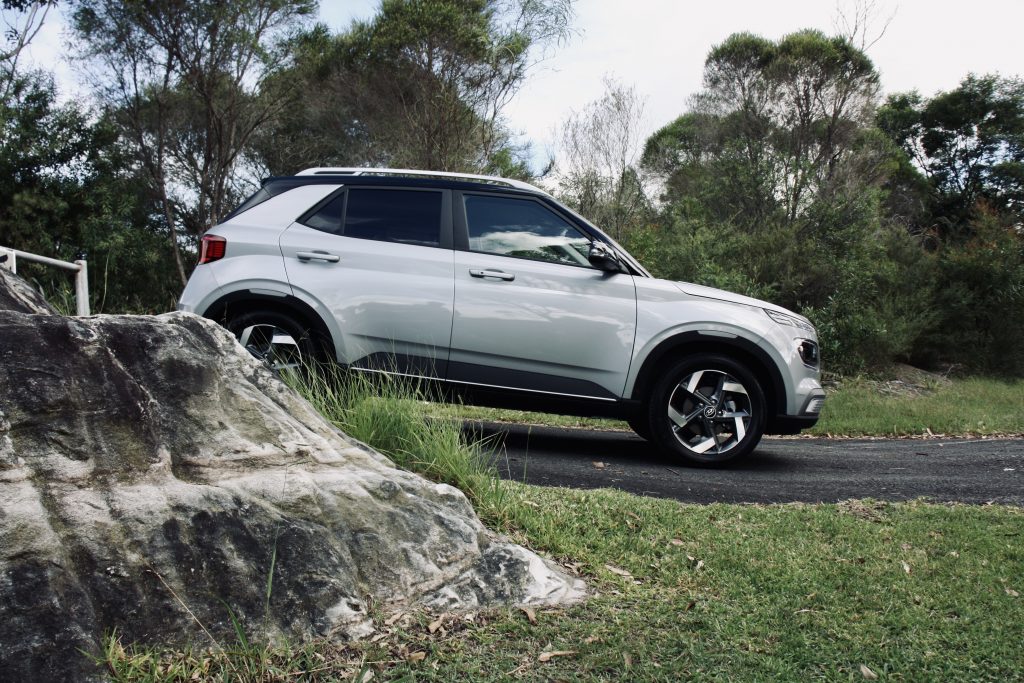
Said servicing is scheduled for every 12 months or 15,000km, meaning you can travel more between services than the Stonic GT-Line or Mazda CX-3 – which both require attention every 10,000km. The Venue will set you back $1,624 over five years or 75,000km, which equates to $325 per service. The Kia Stonic GT-Line will cost a dearer $2,128 and the Mazda CX-3 $1,775, remembering that those heftier price tags also cover 15,000 less kilometres over five years.
“Said servicing is scheduled for every 12 months or 15,000km, meaning you can travel more between services than the Stonic GT-Line or Mazda CX-3 – which both require attention every 10,000km.”
2021 Hyundai Venue Elite DiscoverAuto Rating: 7.2/10
The 2021 Hyundai Venue Elite is a solid choice for those wanting a well-rounded small SUV with a little bit of extra kit and a stylish interior. It presents well in most areas and offers honest and trouble-free motoring for those who just need a good A-to-B car.
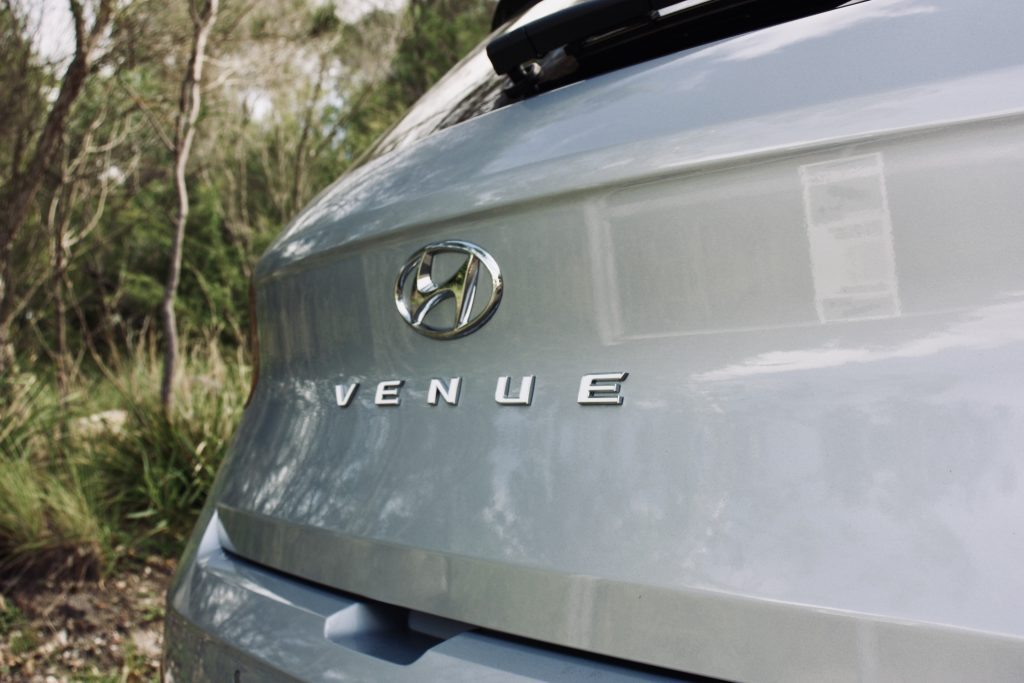
Unfortunately what the Venue delivers in funky design it lacks in interior finish, equipment and poke. The blue denim and cream interior is charming, but the finish leaves a lot to be desired at $30K. Equipment omissions including radar cruise, auto wipers, an auto-dimming mirror, rear passenger charging and air vents become harder to stomach at this price point. Most importantly, where the CX-3 offers a punchy 2.0-litre engine and the Kia Stonic GT-Line swaps out the atom 1.4 for a modern and efficient 1.0-litre turbo, the top-end Venue soldiers on with the old school and thirsty 1.6-litre that just doesn’t cut it at this price point. For that reason we think the humble Venue makes a bit more sense as a base model or as an Active, where the overall package is better suited to the sticker price.
More: Latest on the Hyundai Venue
More: Latest Hyundai News and Reviews
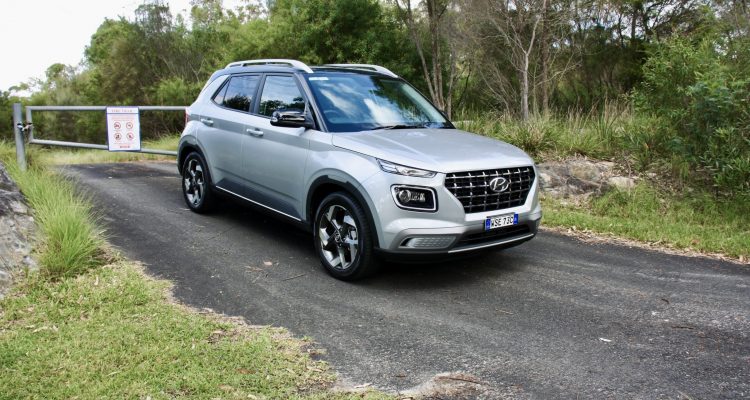
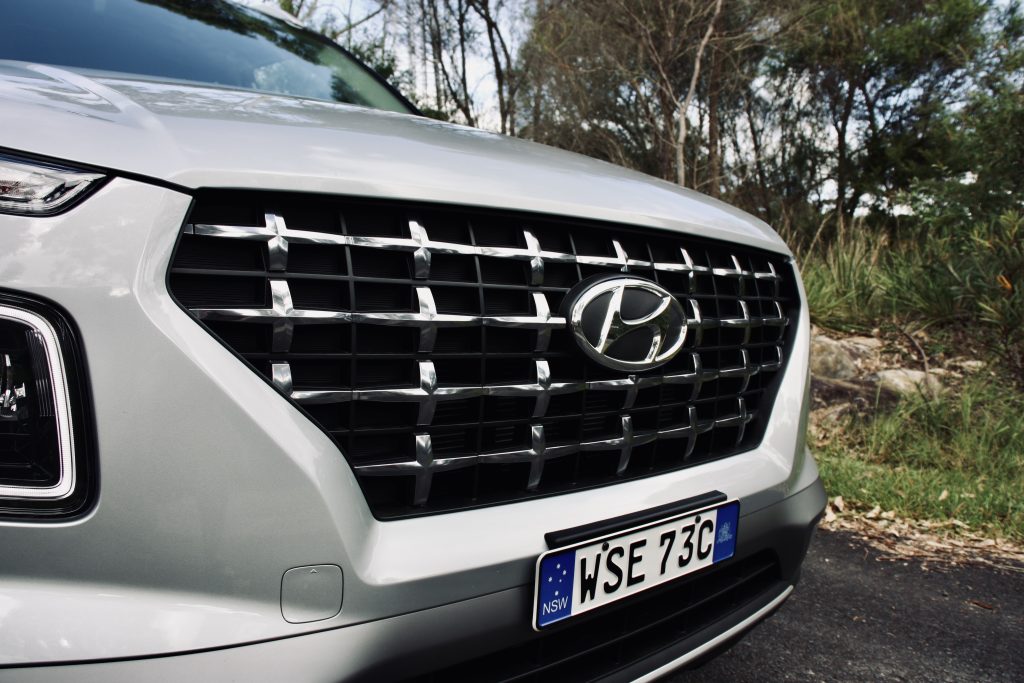
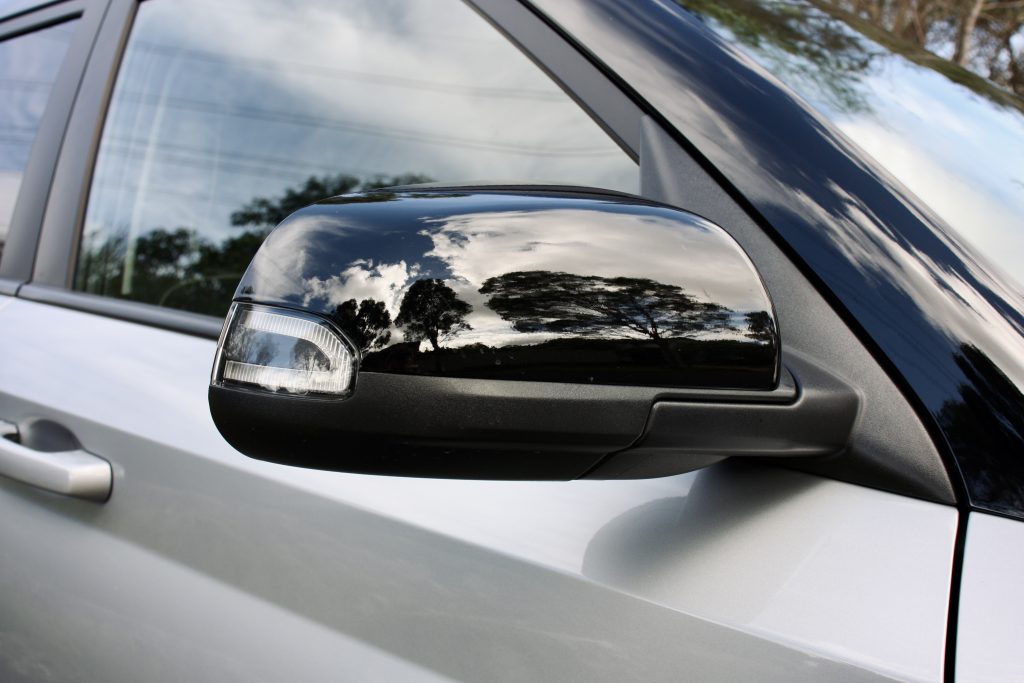
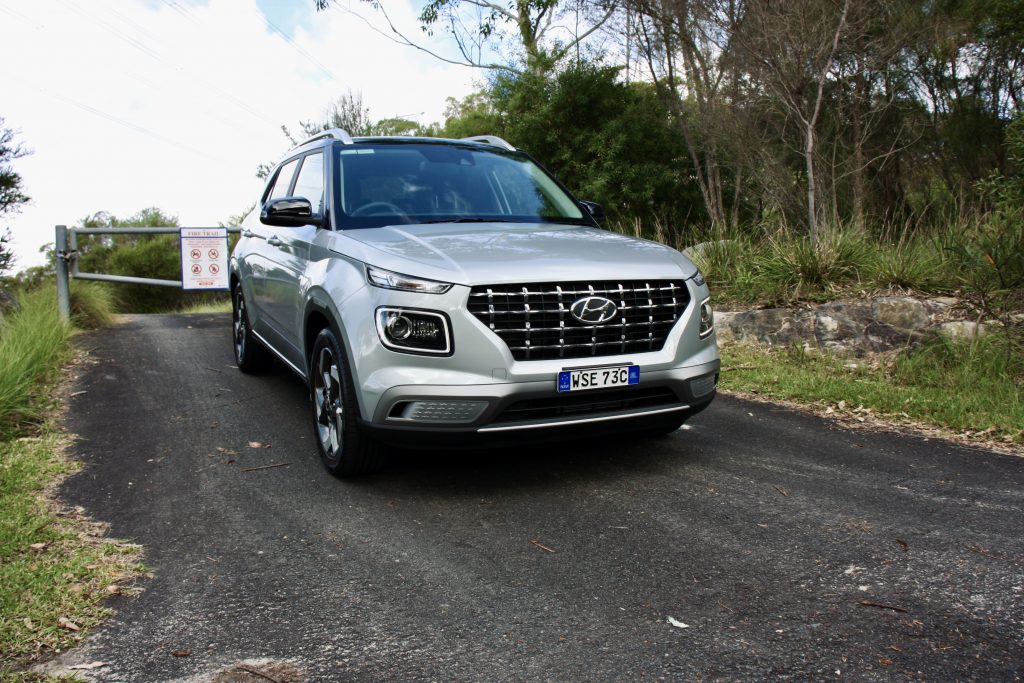
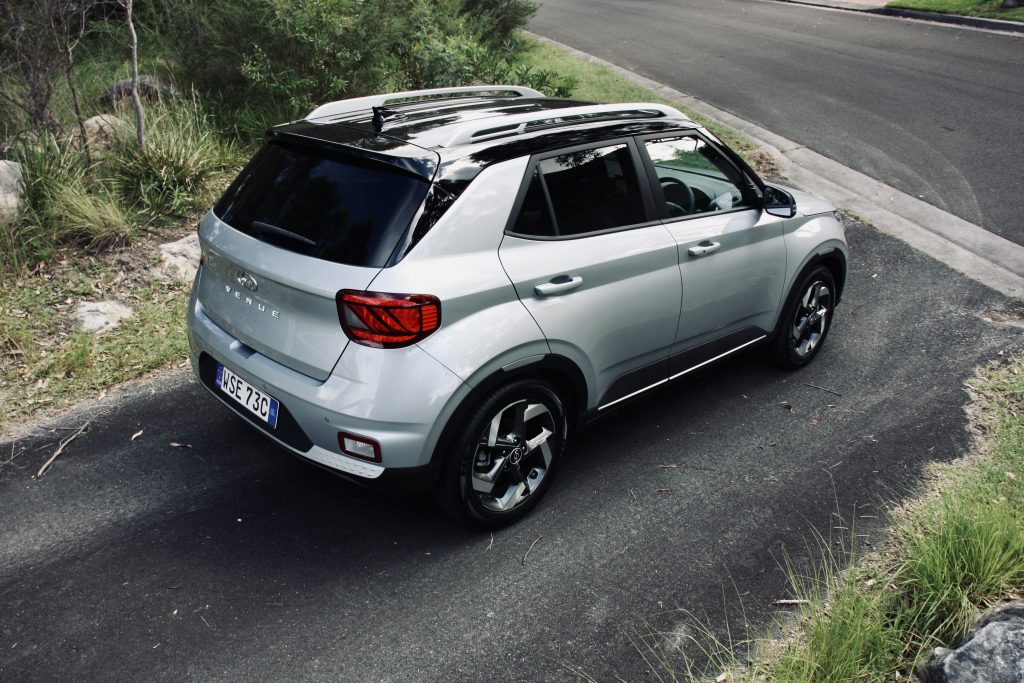
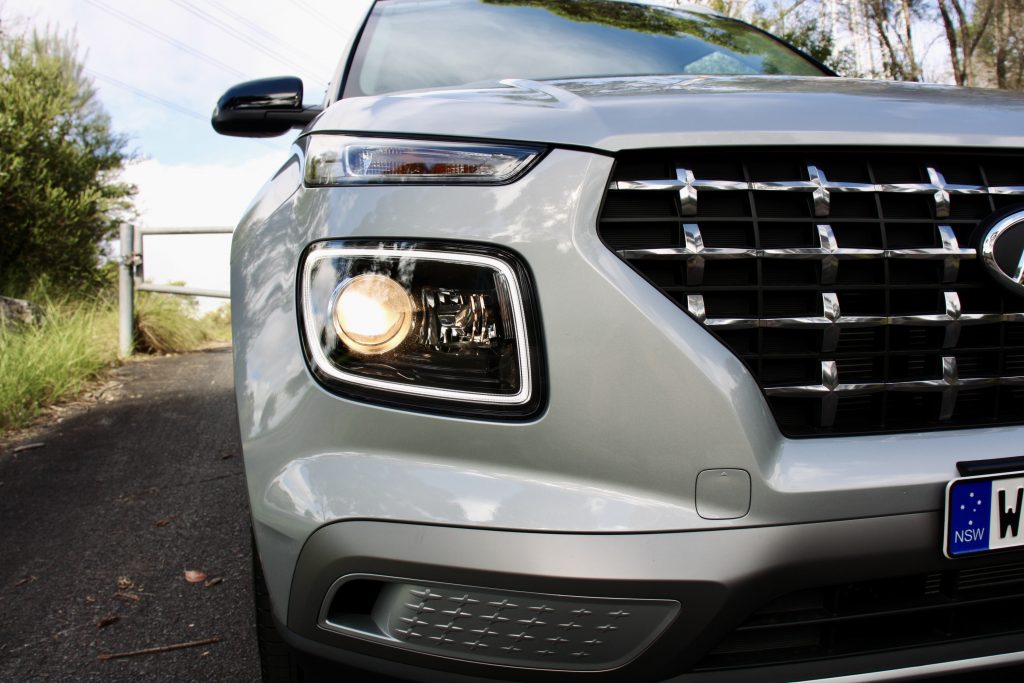
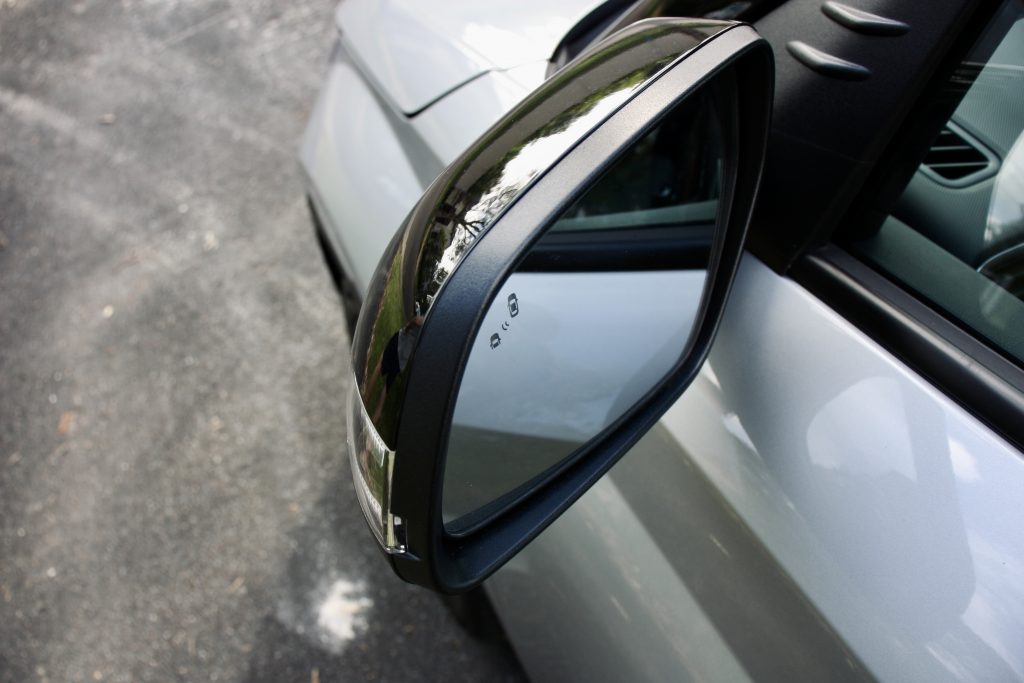
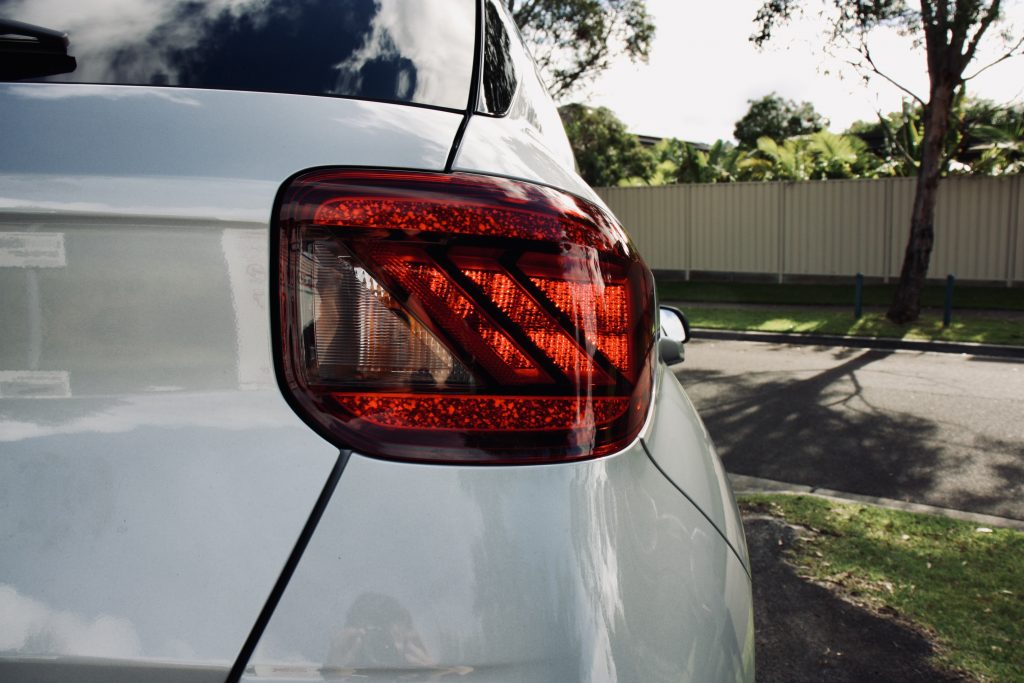
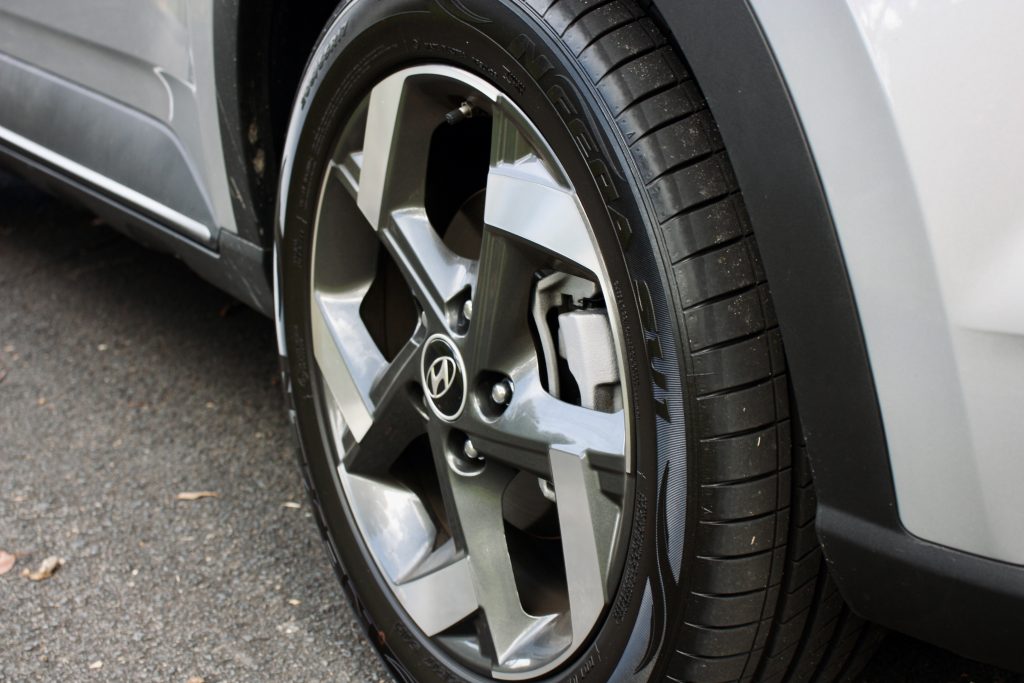
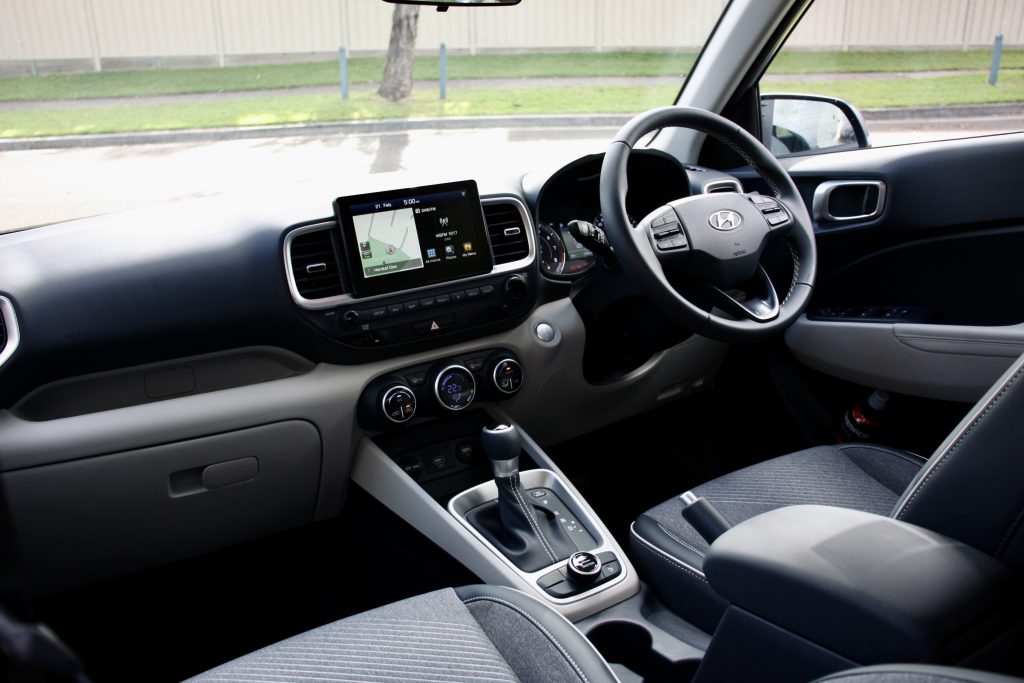
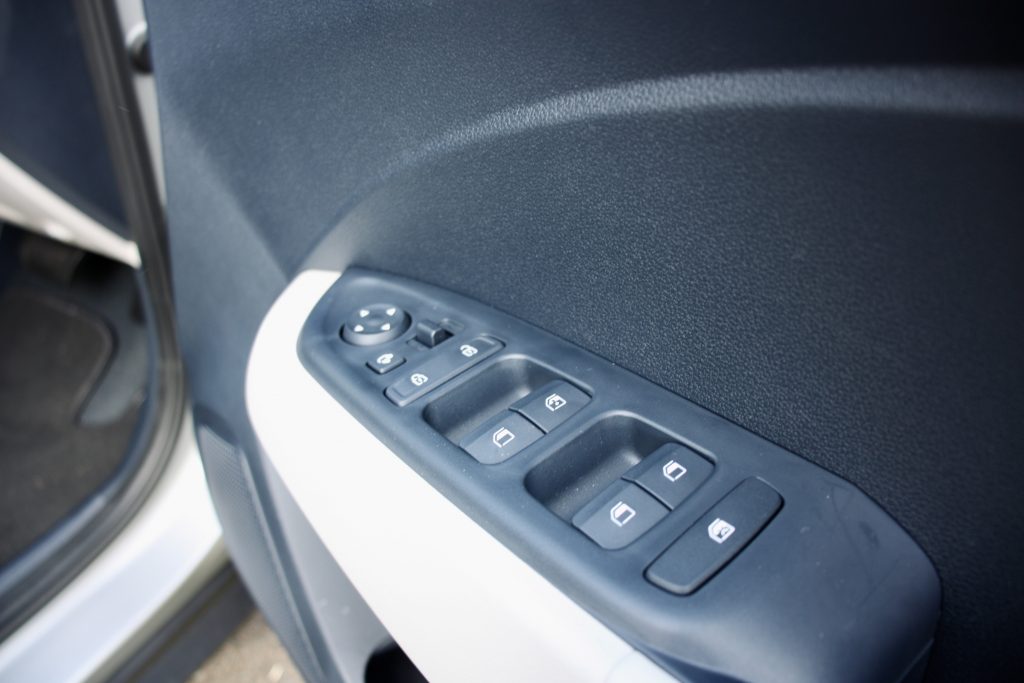
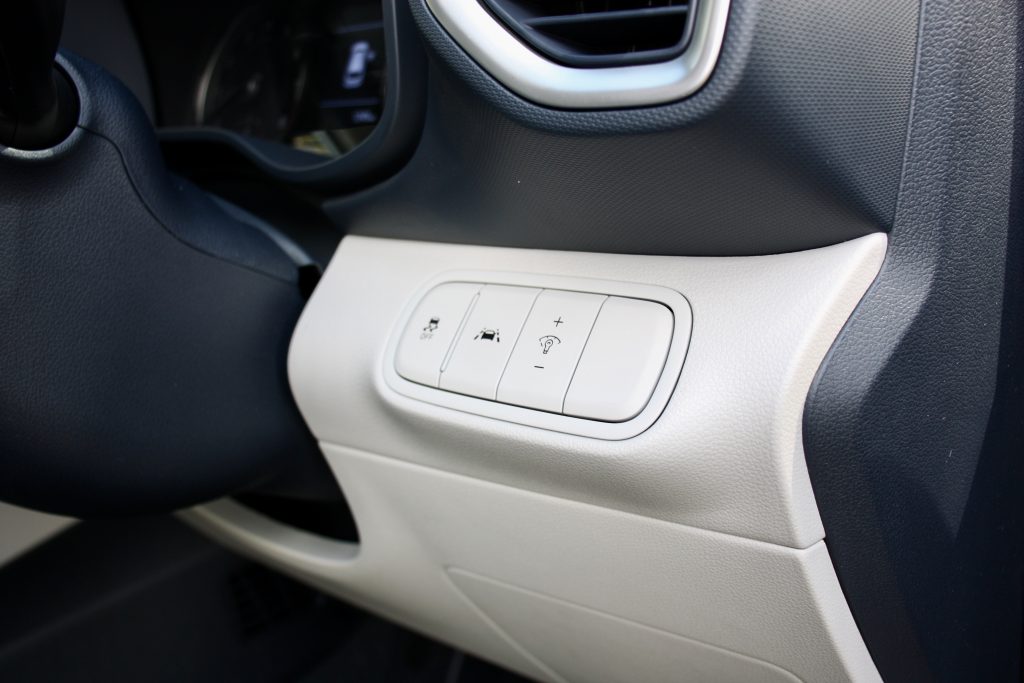
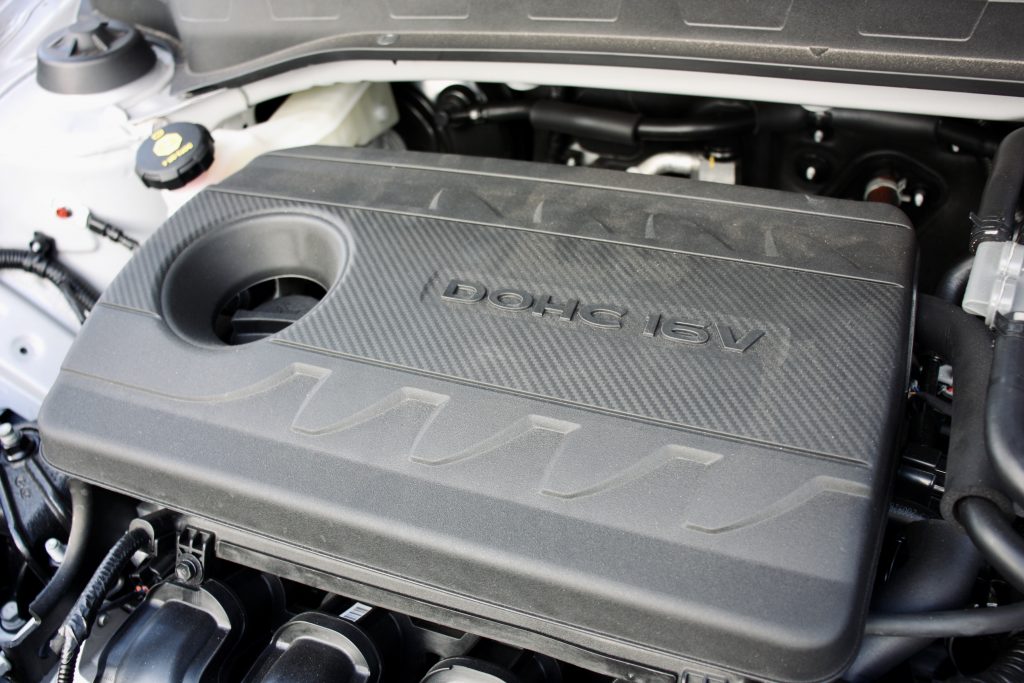
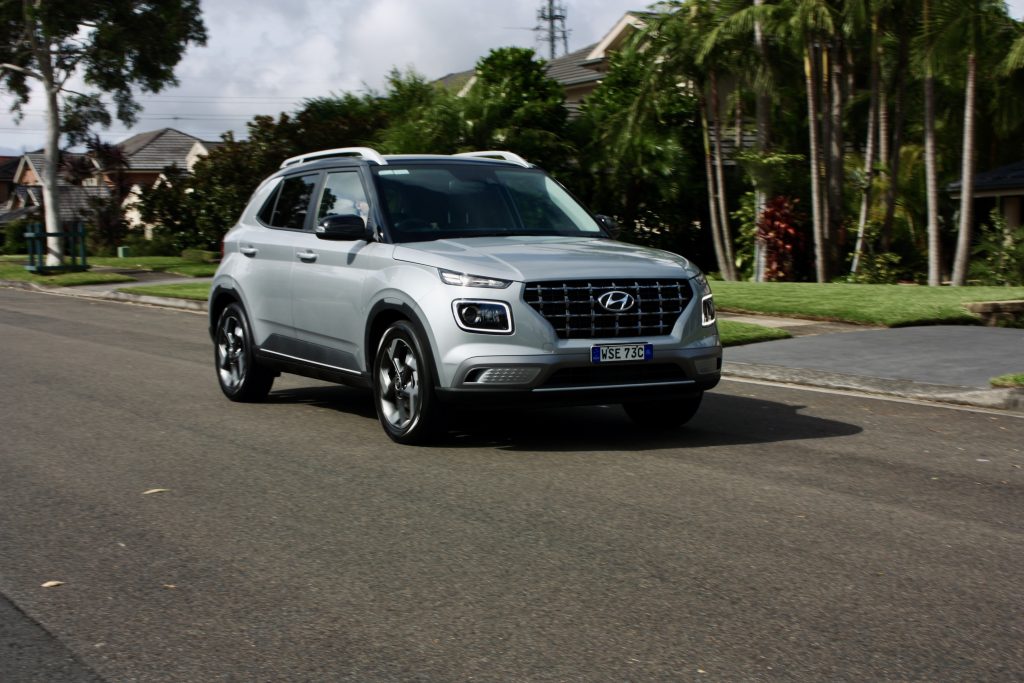
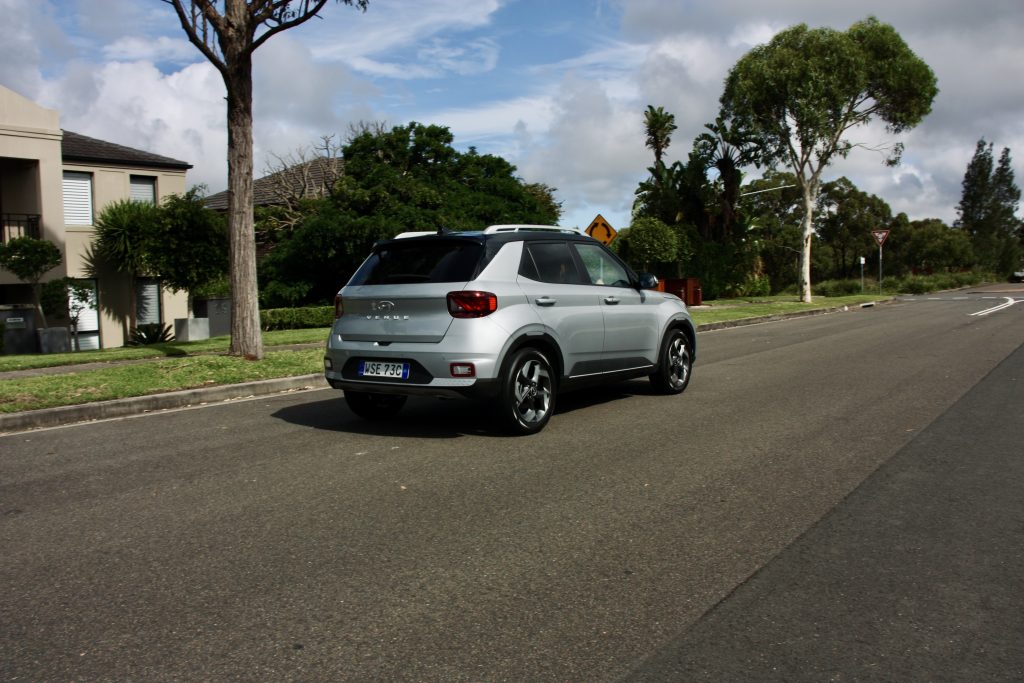
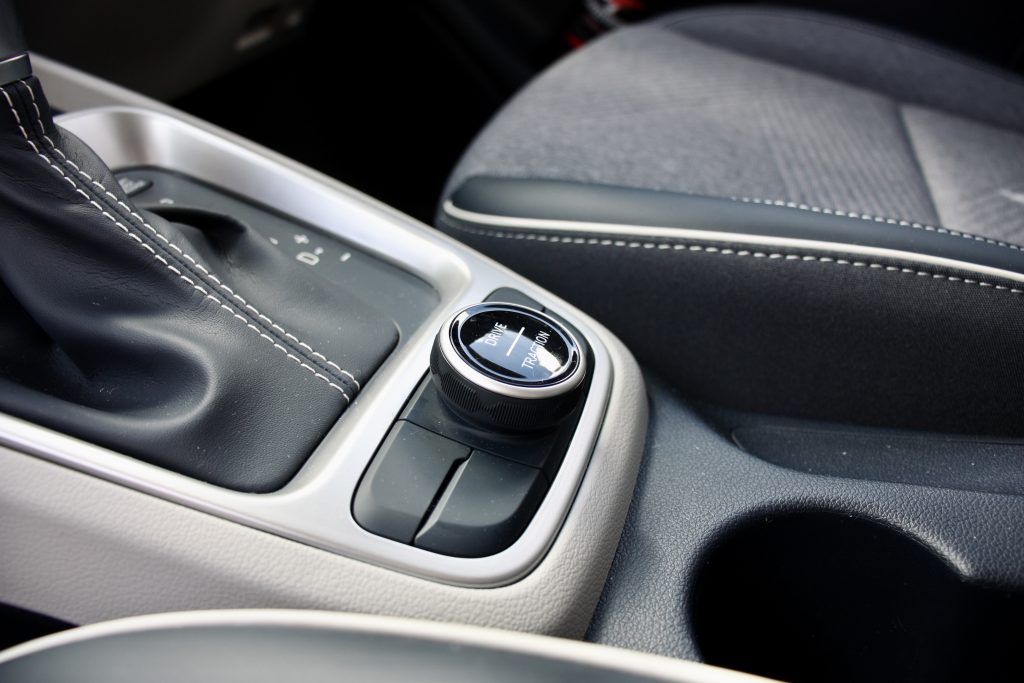
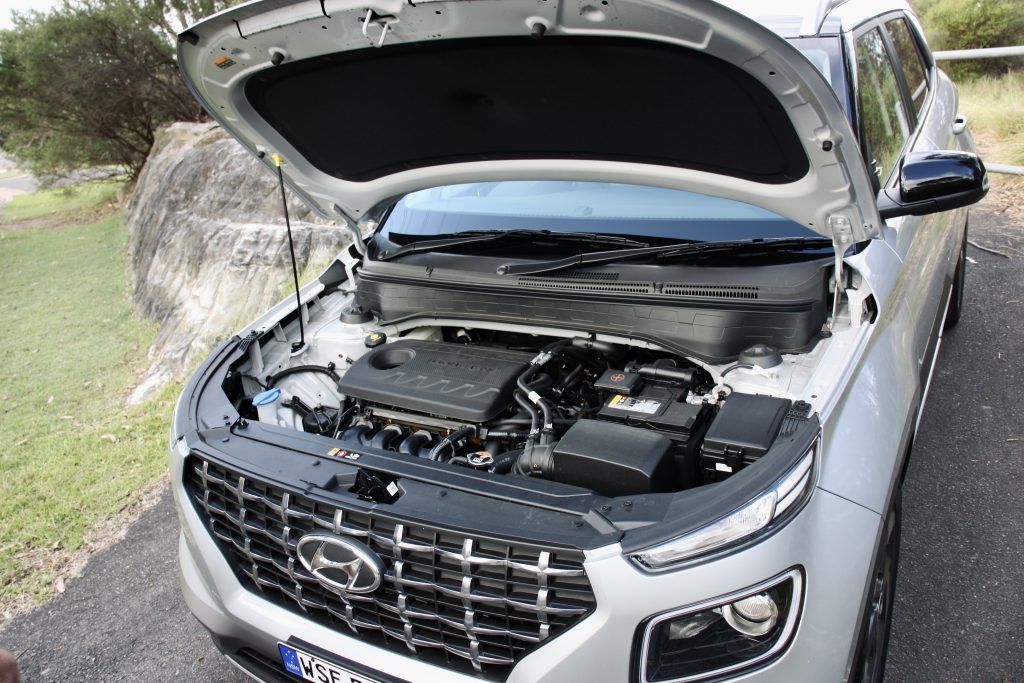
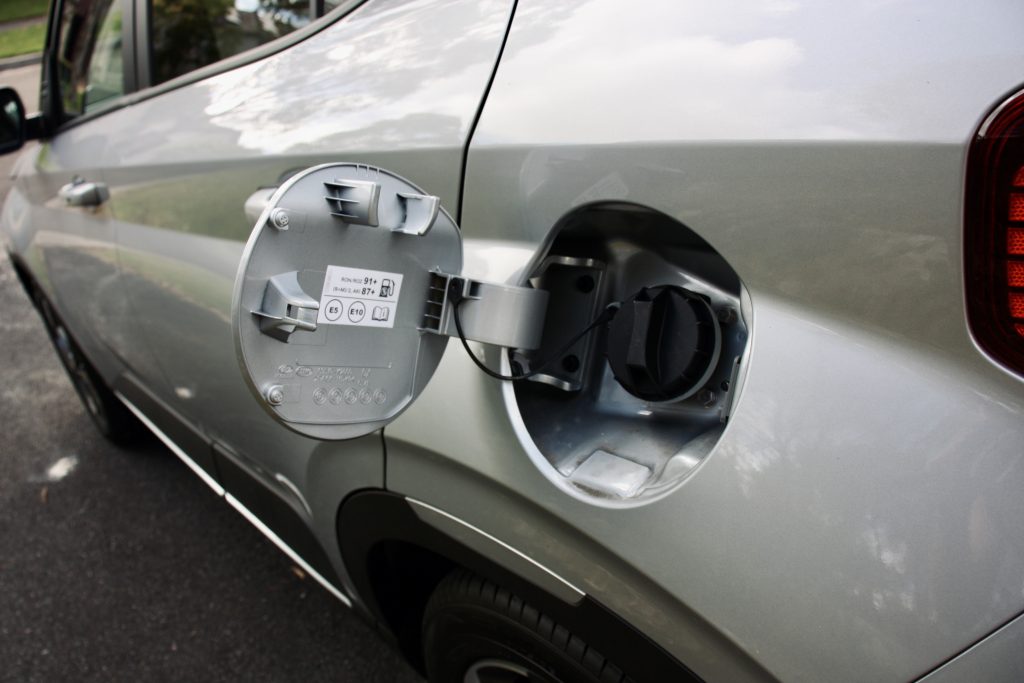
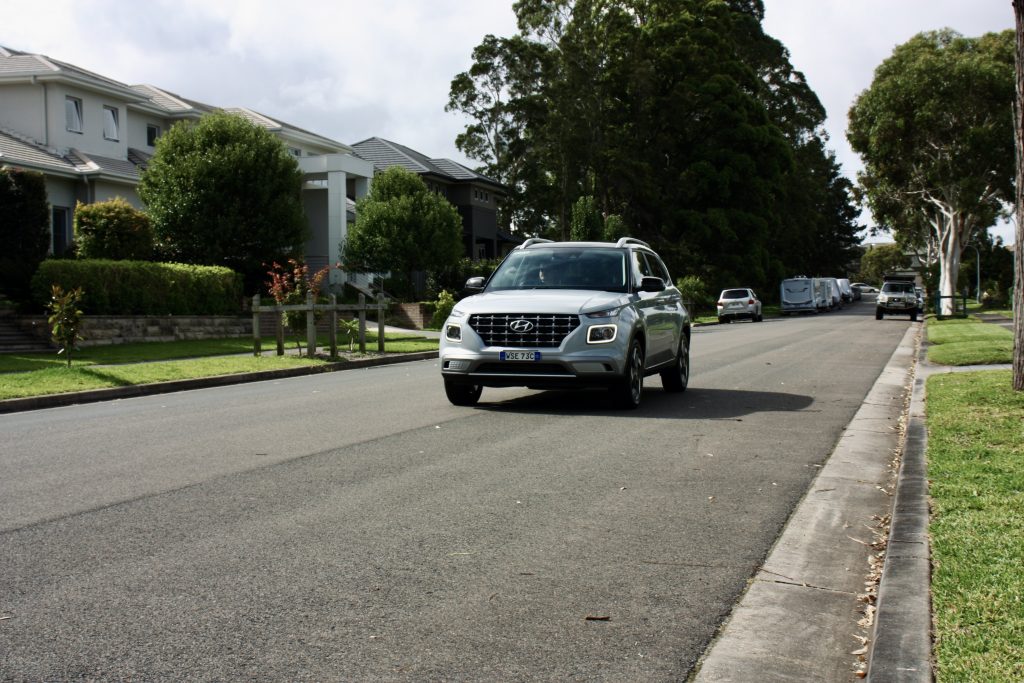
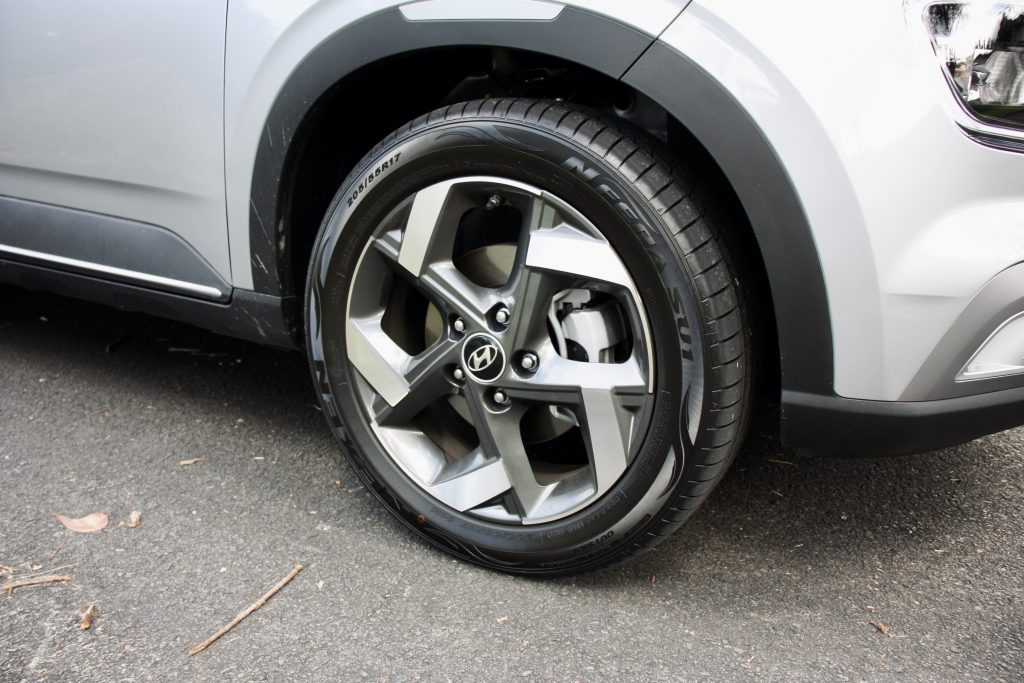
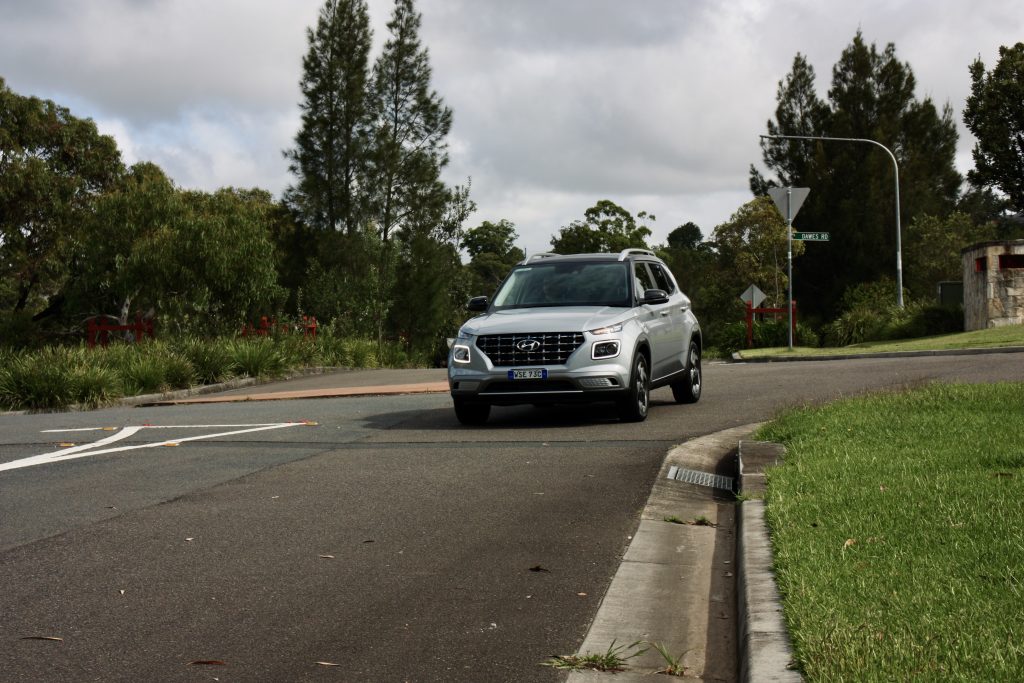
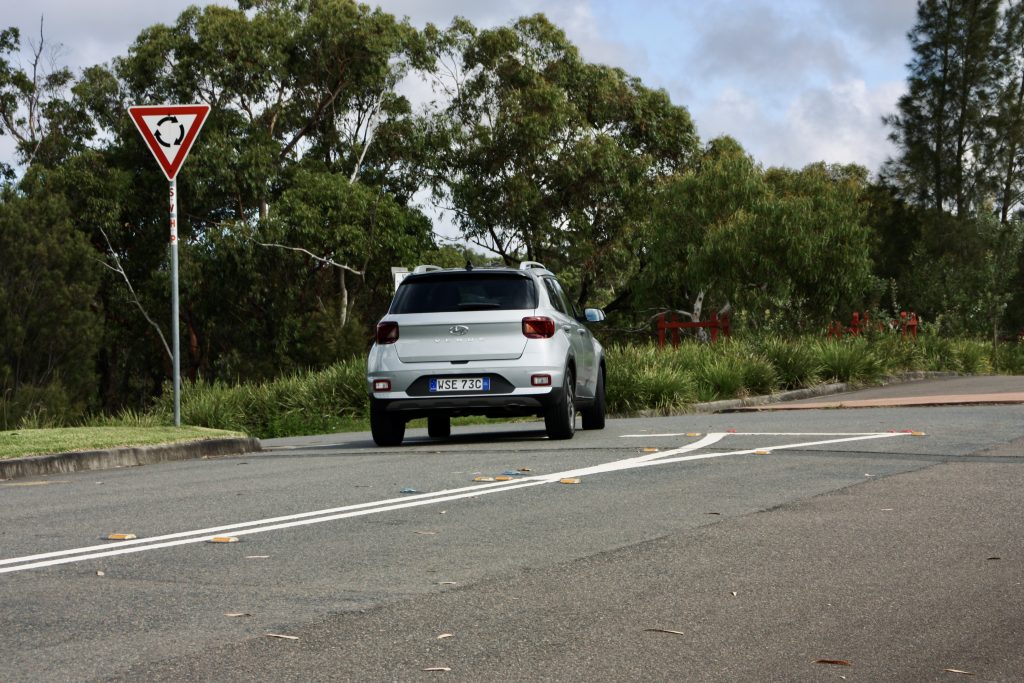
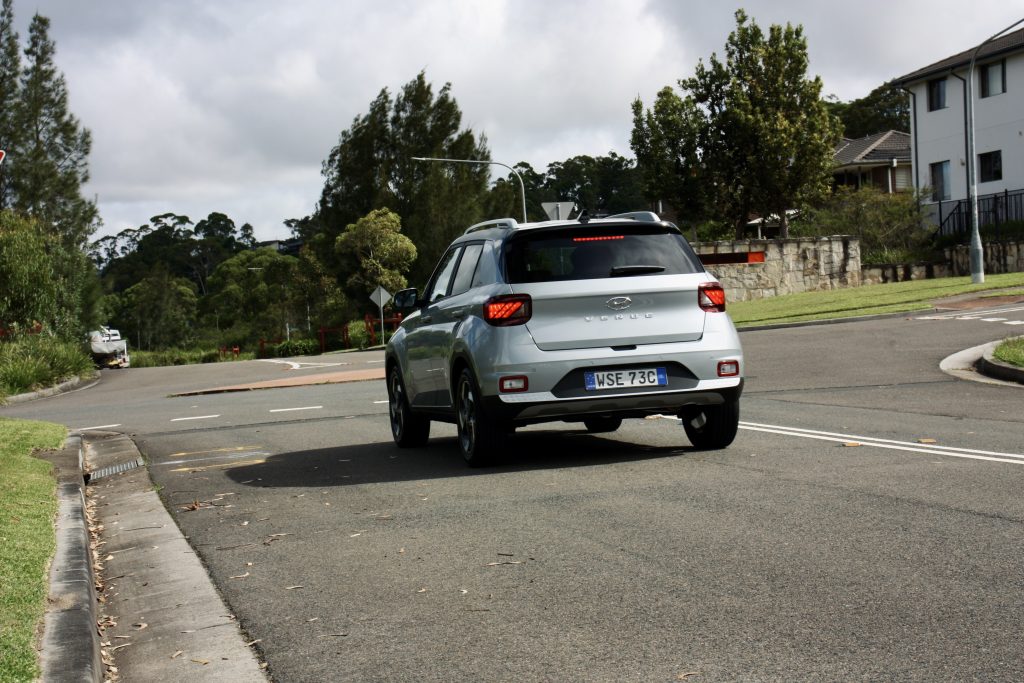
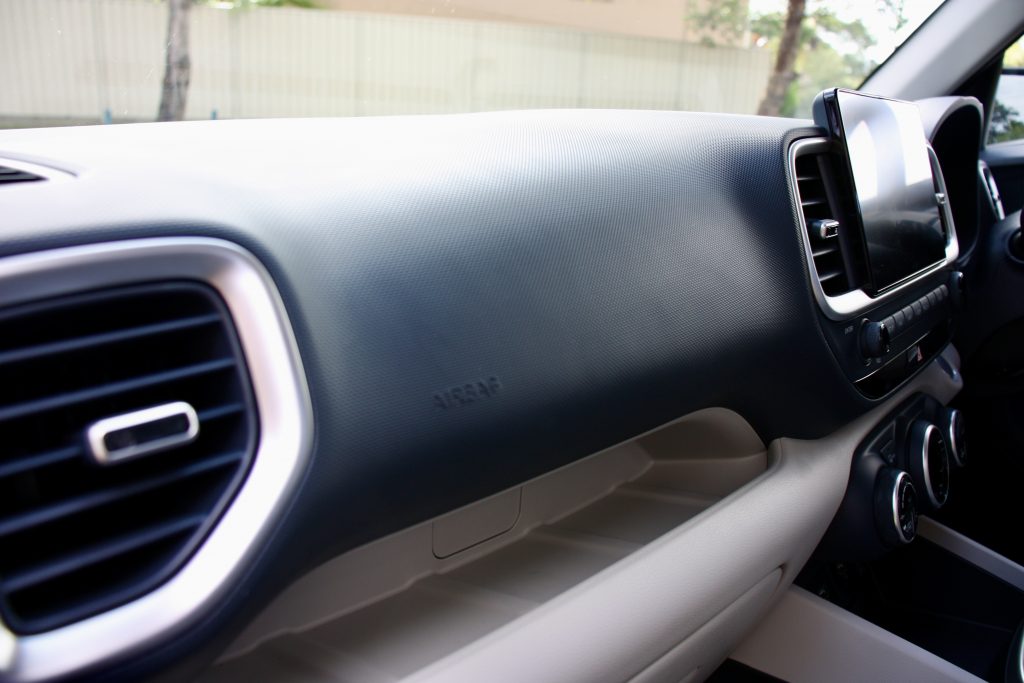
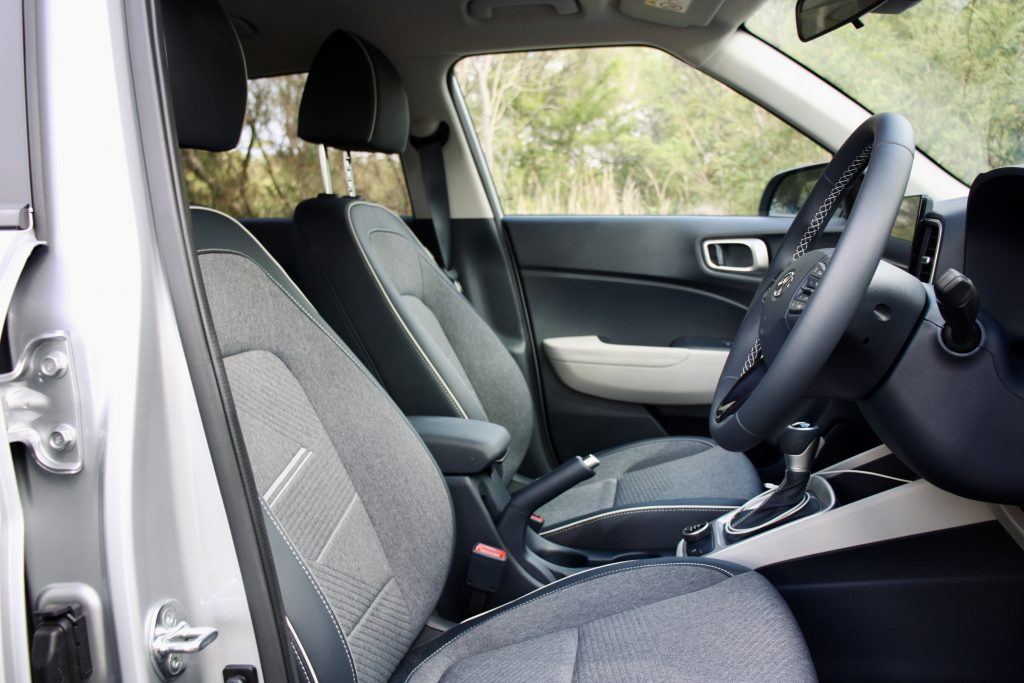
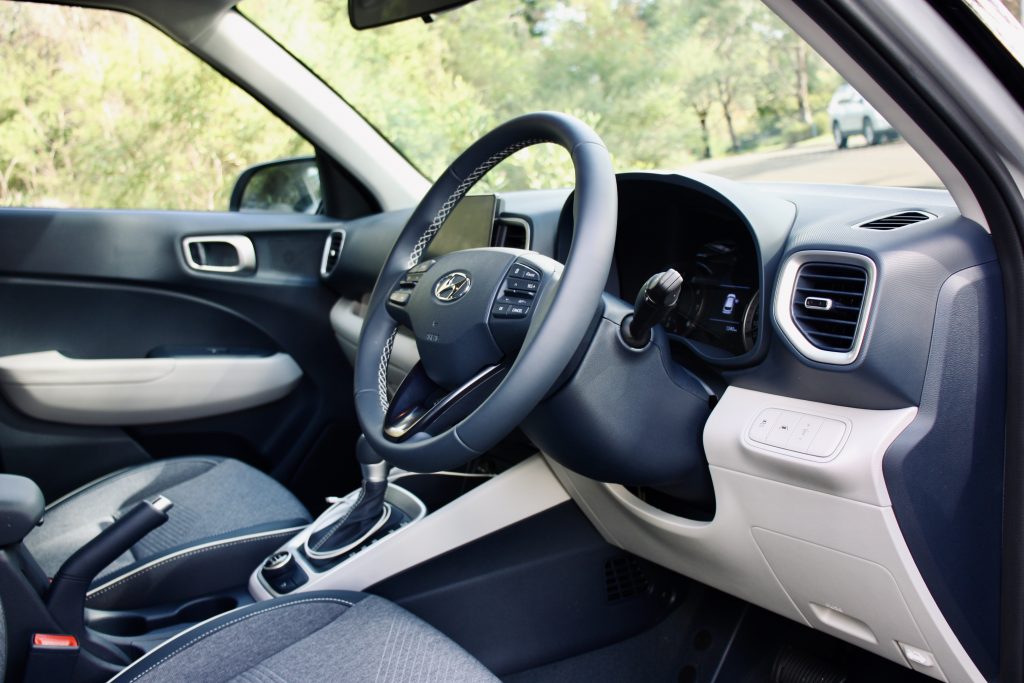
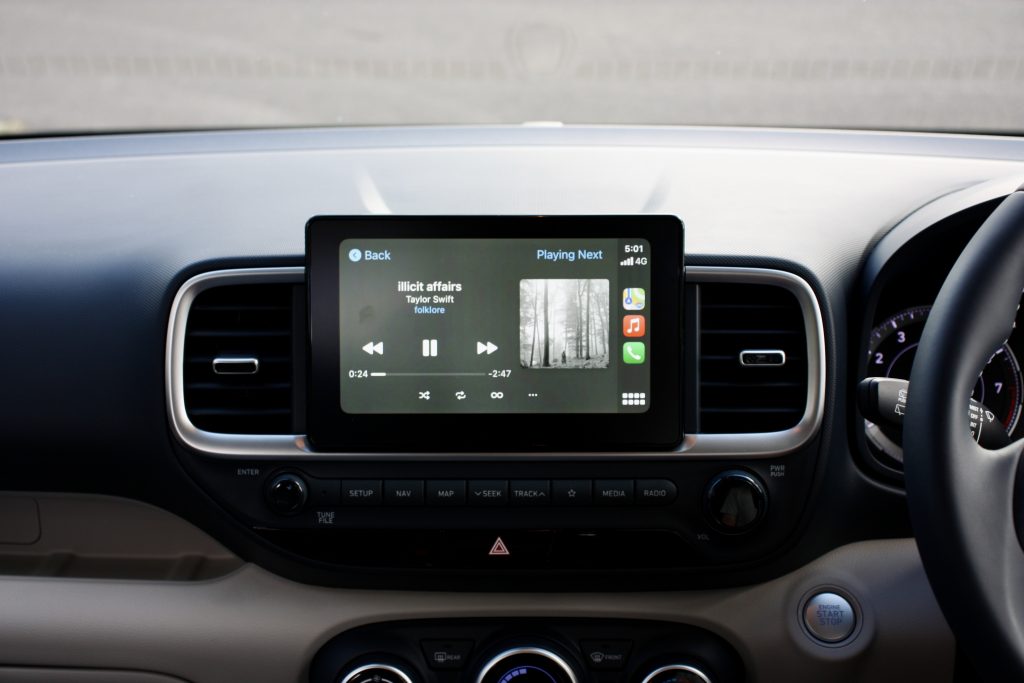
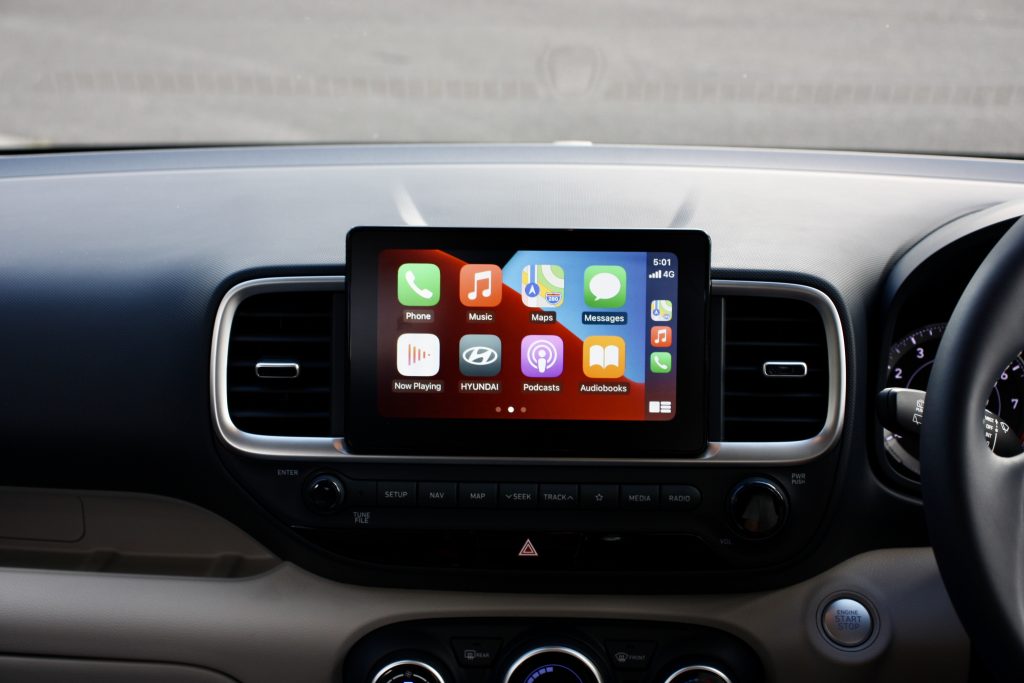
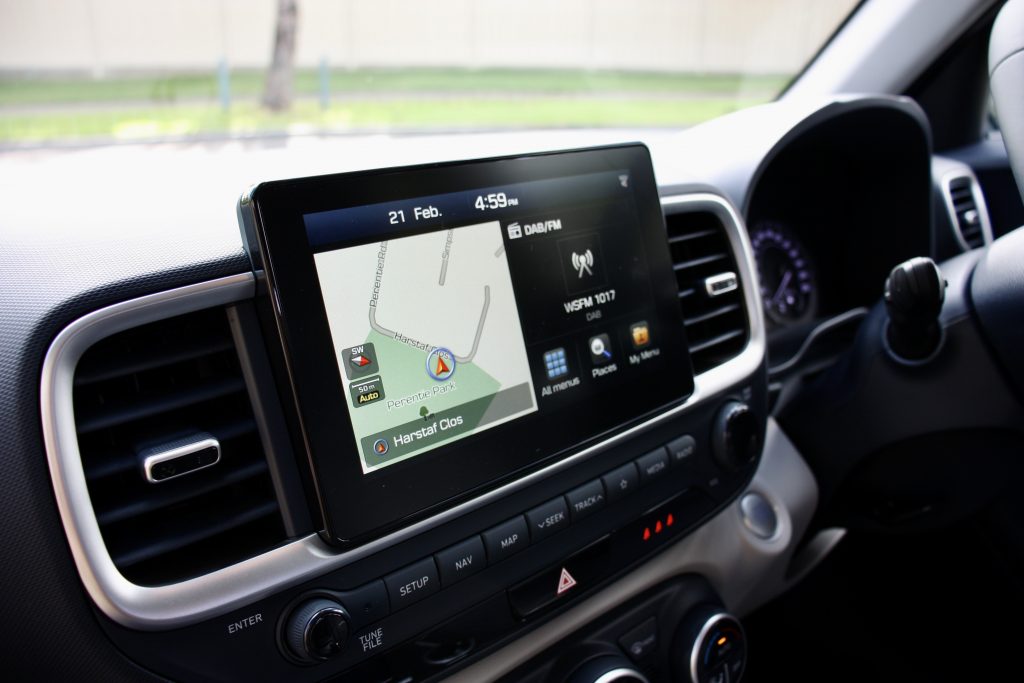
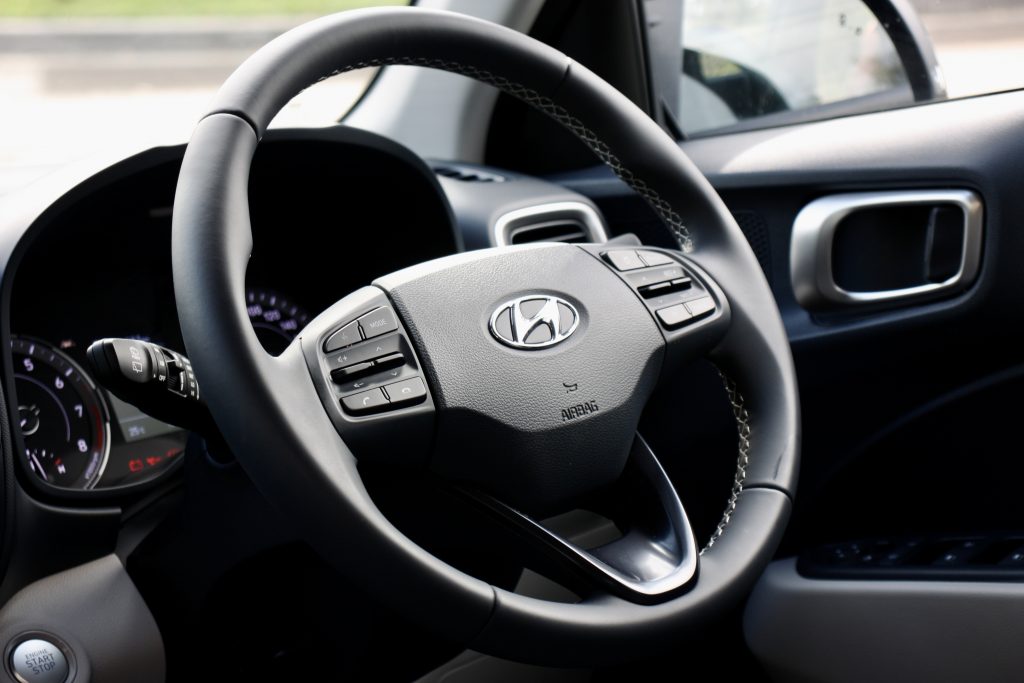
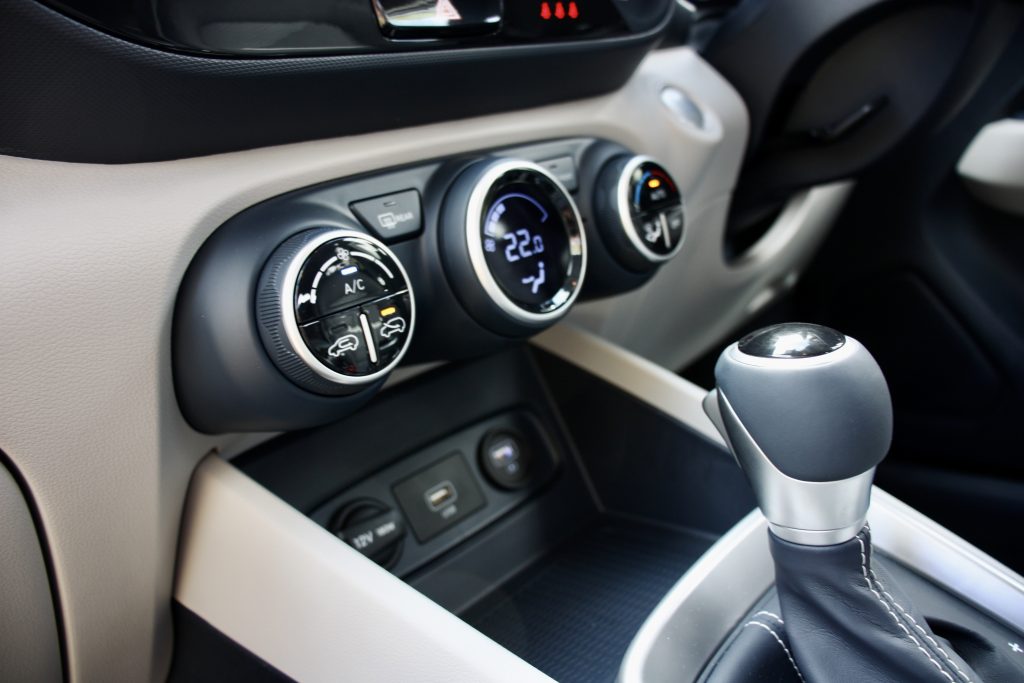
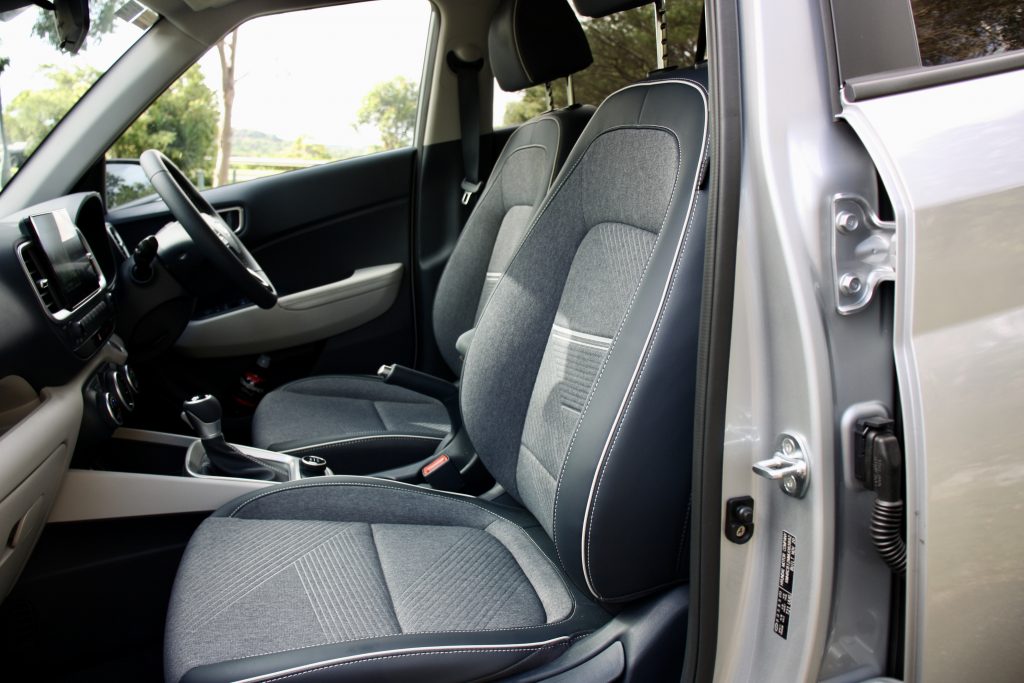
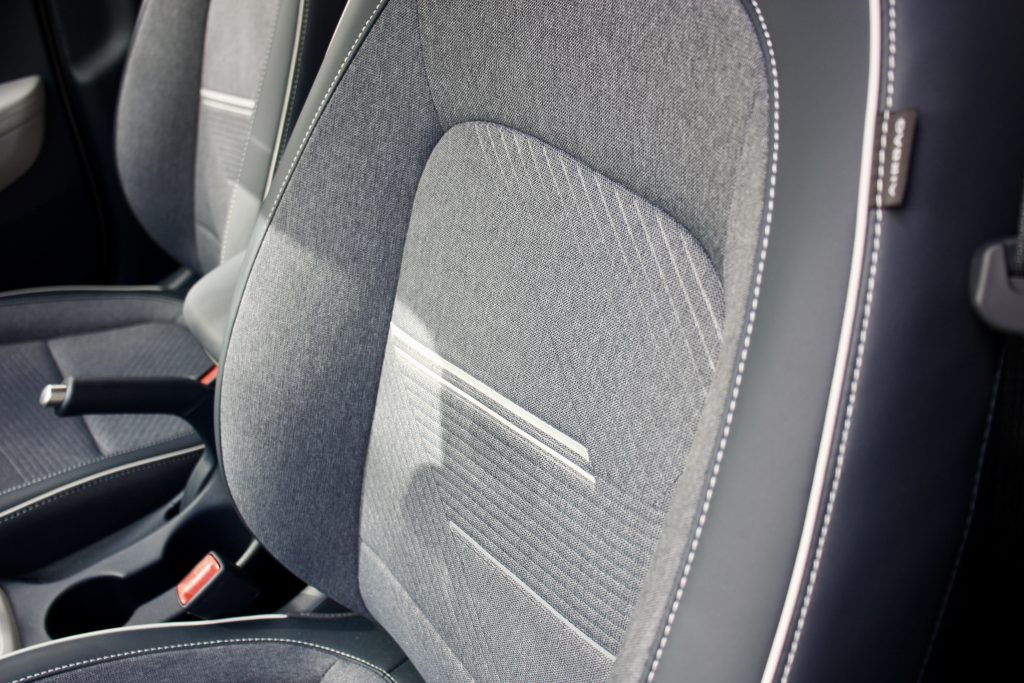
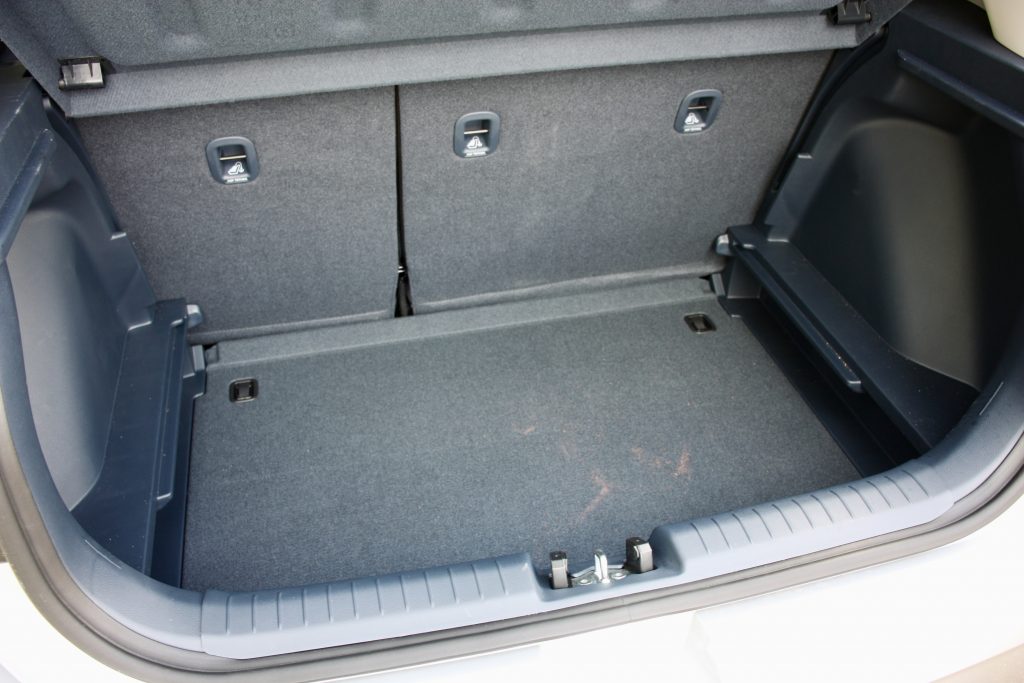
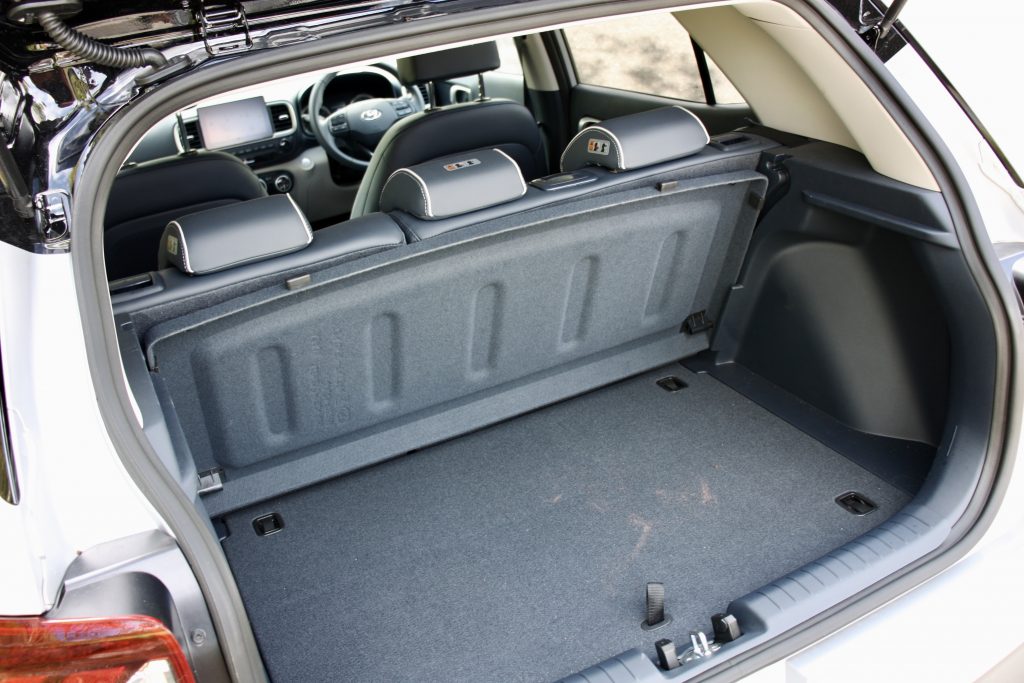
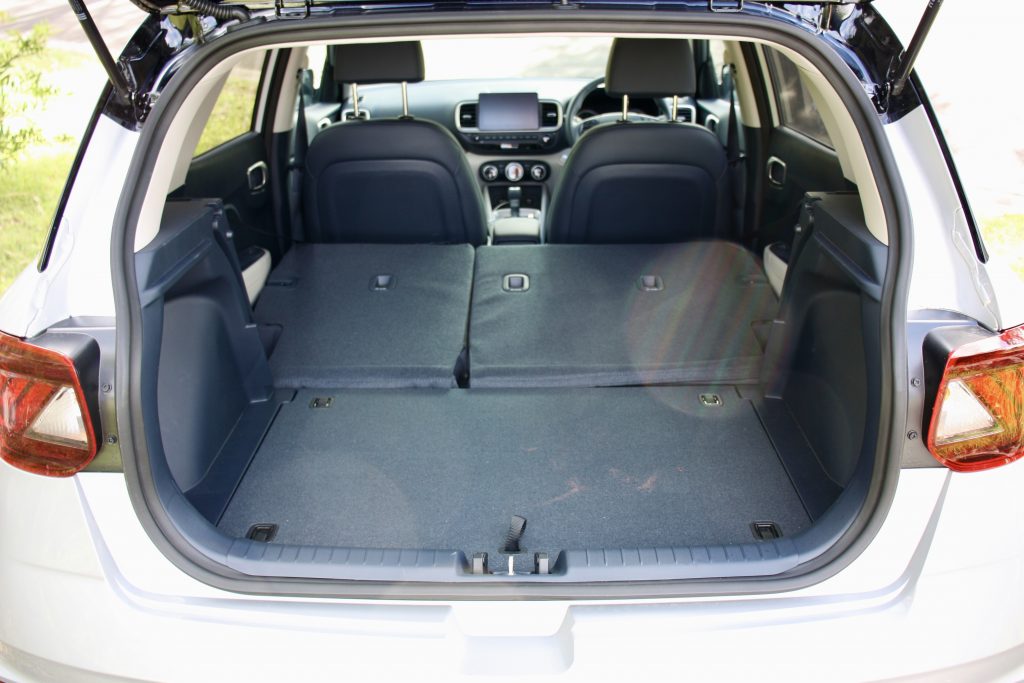
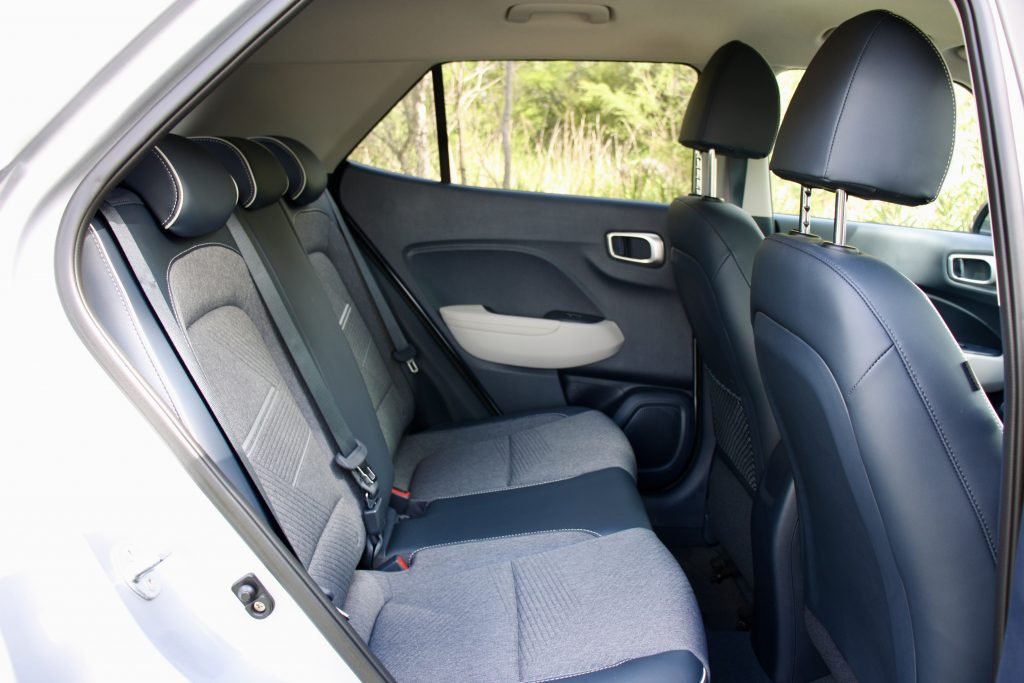
Leave a Reply